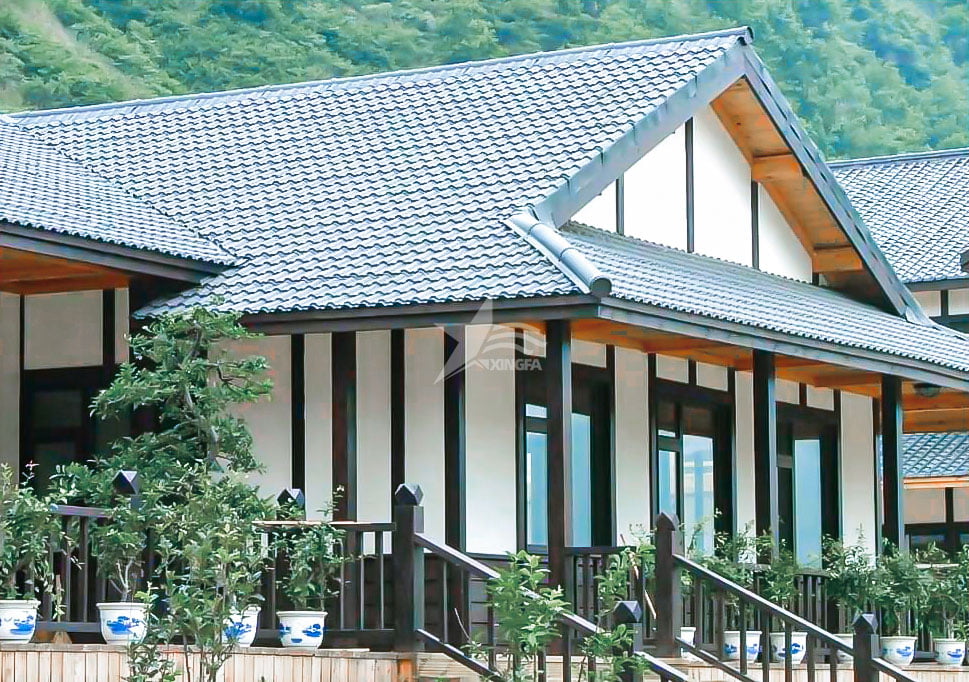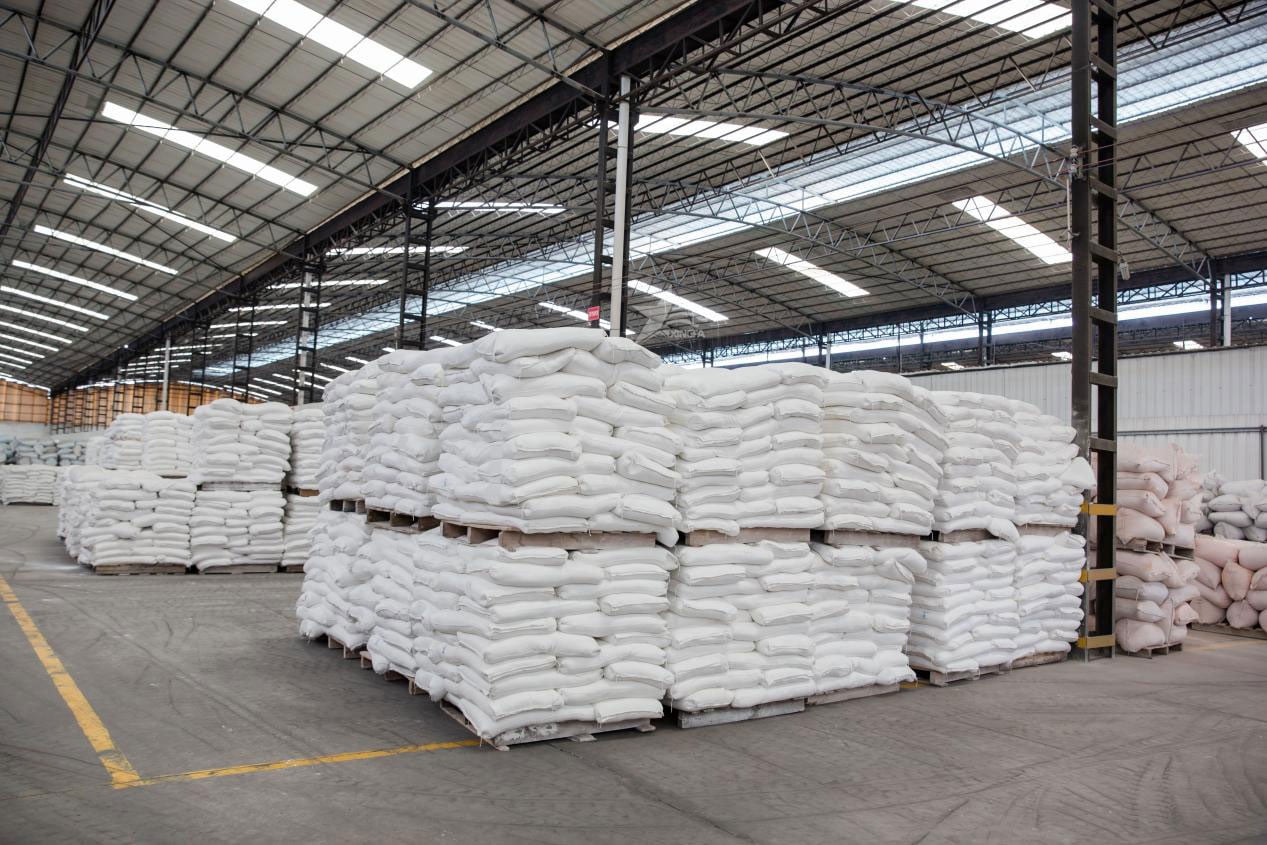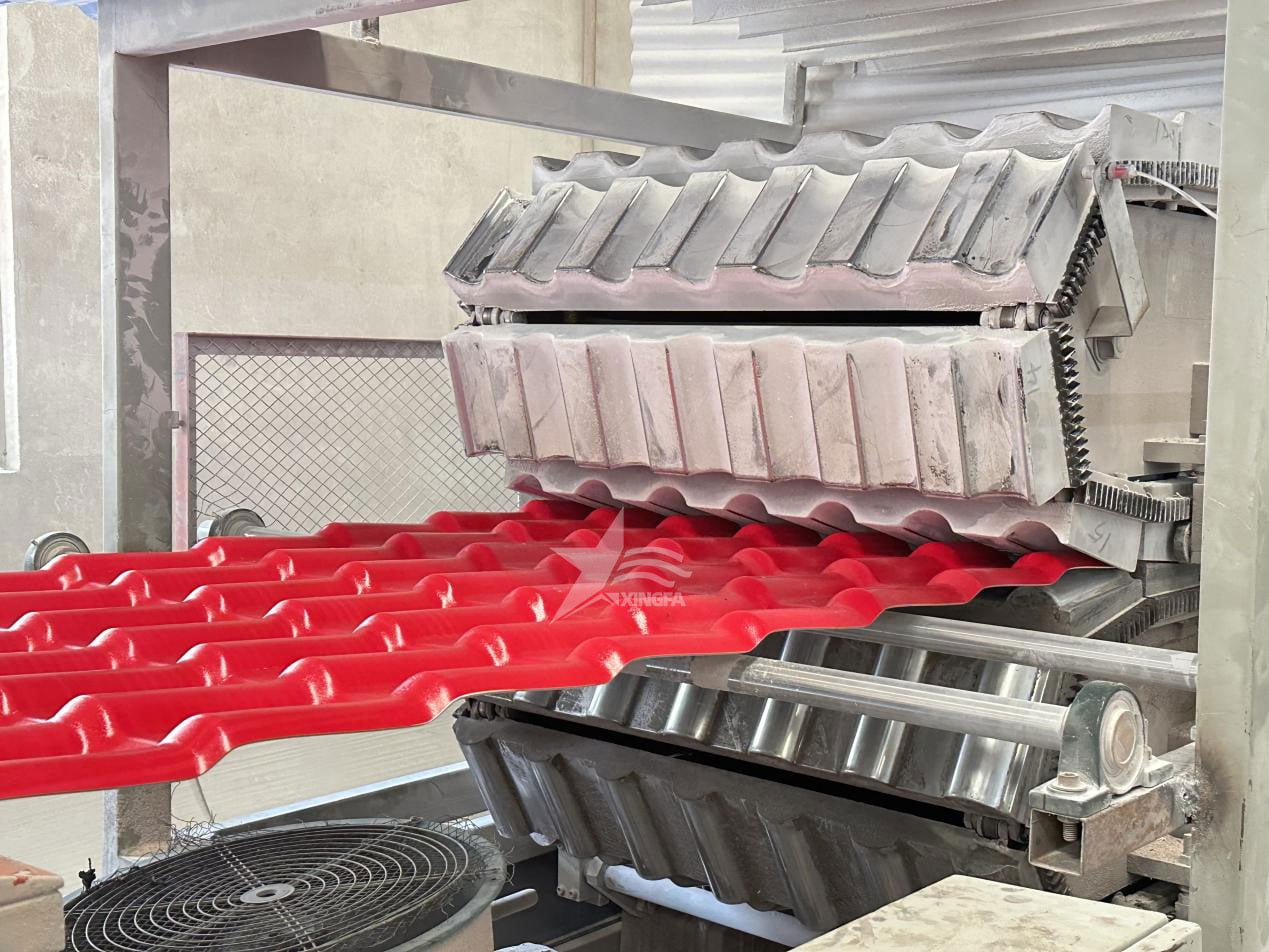Nowadays, many people are building pavilions with resin tiles on their rooftop terraces for insulation and waterproofing. Why choose resin tiles? Firstly, resin tiles have many advantages, such as durability, light weight, self-waterproofing, toughness, heat insulation, sound insulation, corrosion resistance, wind and impact resistance, hail resistance, pollution resistance, green environmental protection, fire prevention, insulation, and easy installation. Moreover, they have a beautiful shape, strong three-dimensional sense, and Chinese elements of color, which are widely used in various types of roof decoration.

Secondly, the taboo of the roof layer is poor heat insulation and waterproof performance, so it is necessary to build a pavilion or shed, which can not only play a role in heat insulation, but also play a role in waterproofing. Resin tile is a new type of environmental protection and energy-saving roof building material. Resin tile material is dense and does not absorb water. After high-temperature firing, the surface of traditional tiles will not produce small cracks. After being washed by rainwater, it is easy to crack and seepage. After absorbing water, the bearing pressure of the house beam and beam will increase. However, if the resin tile does not absorb water, this problem will not exist.
Therefore, installing a resin tile pavilion on the rooftop terrace can have a good effect on the insulation and waterproofing of the house.

Where is the raw material of resin tile from? Environmental protection? What is the market prospect of resin tile? Resin tile has rich raw materials, which is an artificially synthesized polymer material. It is a viscous liquid or solid that can be softened by heating. When heated, there is usually a melting or softening temperature range. Under the action of external force, it can flow in the plastic state. Some properties are similar to resin.
The important use of resin is to make plastics. In order to facilitate processing and improve performance, additives are often added, and sometimes they are used directly for processing and molding, so it is often synonymous with plastics.

There are many kinds of synthetic resins. According to the main chain structure, it can be divided into carbon chain, isomeric chain and non-carbon chain synthetic resins. According to the characteristics of the synthetic reaction, there are addition type and condensation type synthetic resins. In practical application, according to the thermal properties of thermosetting resin and thermoplastic resin, it is often divided into thermoplastic resin and thermosetting resin.
The raw materials for the production of synthetic resin tiles are abundant. In the early days, coal tar products and lime were mainly used. Now, petroleum and products are mainly used for ethylene, polypropylene, benzene, formaldehyde and urea.
Among them, thermoplastic resins include polyethylene, polypropylene, polystyrene, polyvinyl chloride, etc.; thermosetting resins include phenol resins and urea-formaldehyde resins, epoxy resins, fluorocarbon resins, unsaturated polyesters and polyurethanes.

